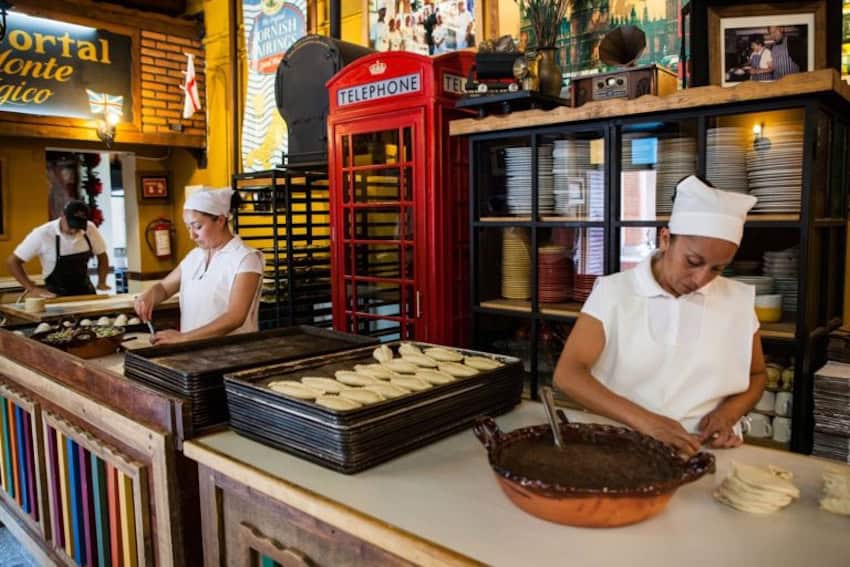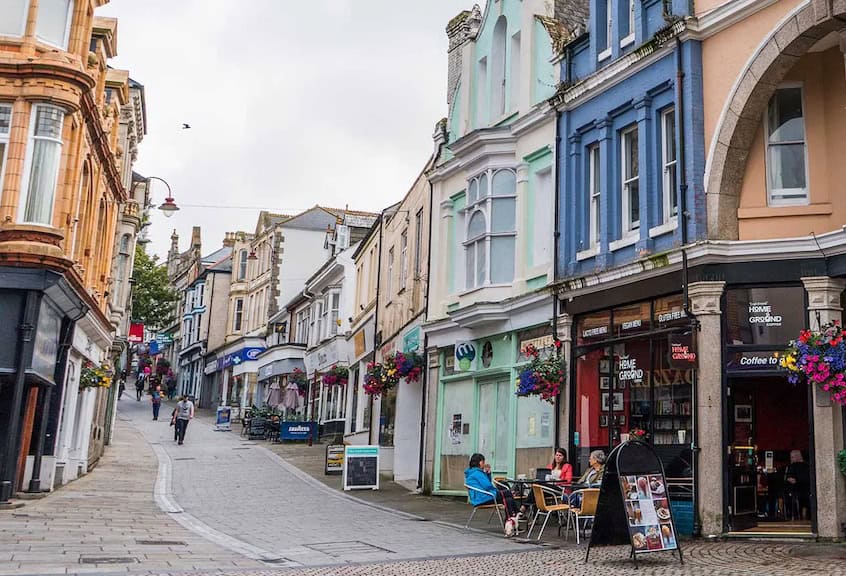Like so much of Mexican history, this story begins with treasure. Deep in the mountains of the central state of Hidalgo lie significant quantities of silver. Despite the mineral wealth contained within, mining conditions were incredibly difficult, with flooding and tunnel collapses common. Understanding how much money there was to be made, local mine owners and engineers (including legendary Mexican engineer Gabriel Mancera) formed the Real del Monte Mining Company and spared no expense in hiring the very best miners that the world had to offer.
The area around Real del Monte, Hidalgo is some of the most beautiful countryside in Mexico. The thick forests and high mountains create a temperate climate. Lush green forests cover the mountainside as far as the eye can see. The architecture is unlike any other in Mexico, with tall brick chimneys and Victorian-era mills and mines. Tourists travel from across the country to take in the sites and enjoy an authentic paste, the traditional miners lunch that was baked for the silver miners who once plied their trade in the plentiful mines of the area.

Thousands of miles away, on England’s southwestern tip, tourists flock to see the tall brick chimneys and Victorian-era mills and mines of Redruth, Cornwall. Many, like in Mexico, enjoy a traditional miners’ lunch called a pasty.
Despite hailing from southern England, the pasty has become a revered piece of Mexican cuisine. While Mexico has taken on elements of several countries that have helped shape it over the centuries, few imports have been received so enthusiastically, and have become so deeply ingrained in Mexican culture as the pasty.
From England to Mexico
The British miners hired by the Hidalgan mine syndicate were from the town of Redruth, Cornwall. Armed with cutting-edge British mining technology of the 1800s, around one hundred miners set off with their families making the journey from Falmouth across the Atlantic Ocean.
The journey was not easy. The port of Veracruz, the original landing point, was blockaded by the Spanish, and the miners were forced to land further away. During the 250-kilometer trek, which lasted 14 months, many Englishmen died. Those who survived the journey found themselves in an unfamiliar world. But as the precious metal finally flowed, more miners eventually came, not just from Redruth, but the surrounding towns of Camborne and Gwennap.
State capital Pachuca’s main square, unusually European in its design, was the product of one of these Camborne transplants. Francis “Francisco” Rule left the town aged just 17 to seek his fortune in Mexico. In Hidalgo, Rule found exactly that and used it to build much of the opulent state capital, including what is now the City Hall, formerly his private residence. The impressive main square, which includes a monumental clock tower that chimes to the same tune as Big Ben and a number of traditionally British buildings including a Methodist Church, was also built thanks to the enormous fortune Rule amassed in Mexico.
Ultimately, the Mexican Revolution sent many of the unattached Cornishmen back home. Those who had taken Mexican wives however, including Rule himself, stayed. Today, their descendants still proudly carry the names of those who first made the journey.
From a worker’s lunch to a national icon

But what of the miner’s lunch that has become symbolic of both regions? The Cornish pasty is said to have been invented as a way for miners to eat a filling lunch while remaining hard at work. A hard pastry shell, with a thick braided crust, is filled with meat, potato and swede (or sometimes cheese and onion), and the end with fruit or jam. To eat it, the pasty is held by its thick braid, allowing miners in filthy conditions to eat without dirtying their food any more than necessary. Pasties are small enough that they could be placed in a trouser pocket, and hard enough that they would stay intact until lunchtime.
The paste, meanwhile, has had an illustrious history in its new country. While the British staple remains staunchly tied to the highly traditional meat and potato or cheese and onion variants, the Mexican version has evolved into a range of flavors that the miners of Redruth could scarcely have imagined. Fillings such as tinga de pollo, hawaiana and of course, mole, have transformed the paste into a perfect representation of the cultural exchange that took place between the two countries.
The Cornish pasty has spread across the world, becoming popular on almost every continent in one form or another. Despite this prodigious expansion, no country has adopted it as their own in quite the same way as Mexico. Mimicking the popularity of the pasty back in native Britain, where the pastry is often sold as a snack in bakeries, train stations and cafes, the Mexican paste can be found on street corners across the country. In Hidalgo, every neighborhood has a paste shop of its own, and in the old mining towns, there is one on almost every street.
If you’re headed to Real del Monte to try the authentic paste, stop by Pastes el Portal, which makes pastes so good that they took the top prize at the Cornish World Pasty Awards. Manned by a cheerful owner dressed from head to toe in a traditional British Policeman’s uniform, pastes are available in 14 flavors, to eat in or take away (I took 2 boxes last time I visited). The tiny restaurant, which often has a queue, also serves as an impromptu mining museum, and many of the staff are former miners who carry on the paste tradition today.
Hidalgo and Cornwall today

The mines in Hidalgo have long since closed. Tourism has filled the gap, and the annual International Pasty Festival has become a staple of the town. At the inauguration of the first event in 2011, then mayor of Real del Monte Omar Mariano Skewes paid tribute to the food. “Cornish people rebuilt our shattered mining industry giving us work, and now again, after we have lost that industry, the Cornish have given us pastes and a new source of income,” he said. The three-day food festival has since become a huge draw for the region.
In Cornwall, pasties (unsurprisingly) remain serious business too — and the community recognizes the important role that Mexico plays in the history of the meal. In fact, the Mexican ambassador to the U.K. was an invited guest at the 2022 World Pasty Championship. Britain’s King (then Prince) Charles and Queen Camilla even made a personal appearance in Real del Monte in 2014, joining in the paste making themselves.
Seven hundred British miners and their families lie at rest at the Panteón Ingles in Real del Monte, having given their lives to building a tiny slice of England deep in the Mexican mountains. In recognition of the life of Francis Rule, Pachuca and Camborne are now sister towns. Redruth and Real de Monte have been twinned since 2008, the bond of their shared history stretching across the ocean.
This article is part of Mexico News Daily’s “UK in Focus” series. Read the other articles from the series here.
By Mexico News Daily writer Chris Havler-Barrett
